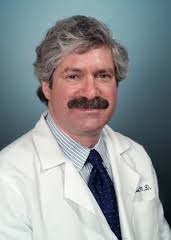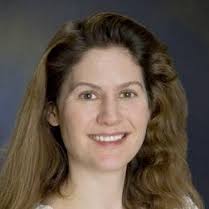12 Aug Treated and Untreated CTCL Lesions Resolved With Topical Resiquimod
MedicalResearch.com Interview with:
Alain H. Rook, M.D.
Professor of Dermatology
University of Pennsylvania
Philadelphia, PA 19104 and
Rachael A. Clark, M.D., Ph.D.
Department of Dermatology
Brigham and Women’s Hospital
Boston, MA 02115
Researchers’ summary: In this paper, Dr. Rachael Clark and I describe a novel topical therapy for mycosis fungoides (MF), which is a skin-limited variant of cutaneous T-cell lymphomas (CTCL), a group of non-Hodgkin’s lymphomas which represent cancers derived from skin-homing T cells. Although therapies exist that suppress the inflammatory skin lesions of MF, there are no curative therapies for this otherwise lifelong disease except for stem cell transplantation, which is only carried out in patients with aggressive and progressive disease.
This manuscript describes a phase I trial of a novel immunomodulatory compound called resiquimod. This molecule stimulates two key receptors TLR7 and TLR8. Unlike imiquimod, a similar compound that is FDA approved for the treatment of local skin cancers, resiquimod actually stimulates inflammatory cytokine release from the dendritic cells that populate both healthy and inflamed human skin. As a result, this drug can enhance antigen presentation and immune responses.
This study demonstrated that topical resiquimod was remarkably effective in that 90% of patients experienced a decrease in the percentage of the malignant T cell clone in skin lesions, and two patients had complete clearance of all disease, including both the treated skin lesions and the untreated lesions. To our knowledge, this is the first demonstration of regression of untreated skin lesions using a topical medication. This suggests that systemic antitumor immunity develops in these patients. Translational studies on the skin before and after treatment showed that the malignant T cell clone declined and inflammatory cytokine production by benign T cells increased after therapy suggesting the medication enhanced antitumor responses.
In summary, this manuscript describes a small phase I trial that showed that topical resiquimod is safe, effective therapy for mycosis fungoides and can cause regression of both treated and untreated skin lesions, and may therefore represent a long-term potential cure for this otherwise lifelong disease.
MedicalResearch: Could you provide me with some background on this project? Why did you decide to do this research project? What prior work led up to this latest paper?
Dr. Rook: The clinical trial was based upon nearly 10 years of laboratory work using a number of different compounds that were Toll like receptor agonists with the capacity to activate the innate immune response.
The basis for utilizing immune potentiating agents with the capacity to induce a Th1 type immune response was related to previous observations that patients with leukemic forms of advanced cutaneous T-cell lymphoma had circulating malignant T-cells that secrete Th2 cytokines with the ability to suppress anti-tumor immunity. Furthermore, patients with leukemic variants (Sezary syndrome) clearly manifested endogenous immune suppression. Importantly, these patients often responded clinically to immune potentiating agents, such as interferons and interleukin-12, with an improved clinical course.
Therefore, as another avenue to enhance the immune response, agents with the potential to activate innate immunity were tested. Initially work with CpGs, which are TLR 9 agonists, looked very promising in vitro. CpGs clearly demonstrated the ability to significantly enhance cellular immunity. This work was published in Blood in 104:4142, 2004.
This study led to a phase I trial of a type B CpG for refractory CTCL. The study looked very promising with some highly refractory advanced stage patients responding completely, but it was discontinued when the study sponsor, Coley Pharmaceuticals, was purchased by Pfizer. The results of the study were published in the Journal of the American Academy of Dermatology in 2010 63:975.
In search of a more potent immune enhancing agent, we commenced our laboratory work with resiquimod in 2005, which is a TLR 7 and 8 agonist. Resiquimod is a member of the imidazoquinoline family which also includes imiquimod, which is a TLR 7 agonist. We published in 2002 the first report that patients with cutaneous T-cell lymphoma could clear skin lesions when treated with topical imiquimod.
It is noteworthy that I have been working with immune potentiators since 1980 when I began to study AIDS while at the NIH. Resiquimod, in my experience, was the most potent agent I had ever tested in vitro in regard to its ability to broadly enhance the cellular immune response. Our in vitro findings were published in Leukemia and Lymphoma 2011, 52:1970. It took 7 years to acquire the drug from a pharmaceutical company that could be used for a phase I study. Spirig Pharma in Switzerland (recently acquired by Galderma) provided the drug but no funding to support the study. It then took an additional 18 months of grant writing to obtain satisfactory funds to support the trial as well as the correlative research.
The specific drug concentrations were selected based upon many hours of discussions with members of the innate immunity team at 3M which initially manufactured the drug and provided it to Spirig. Furthermore, there was good rationale to apply the drug directly to skin lesions containing the malignant T-cells; the bioavailability was high and there were animal models suggesting that this class of drug could potentially immunize against the cancer.
MedicalResearch: Can you explain the methodology used in your paper? Why did you decide to adopt this approach?
Dr. Rook: To perform this study properly, having smart colleagues with big brains to guide you down the right pathway is essential. In that regard, Dr. Joel Gelfand, Associate Professor of Dermatology at Penn’s Perelman School of Medicine assisted in developing the entire clinical protocol with outstanding biostatistical advice from Dr. Andrea Troxel, Professor of Biostatistics and Epidemiology at the Perelman School of Medicine. Having the leading clinician/scientist in the field of immunological studies of skin and CTCL, Dr. Rachael Clark, Associate Professor of Dermatology from Harvard Medical School, contributed to absolutely fascinating immunological and molecular observations described below.
MedicalResearch: What were the most significant findings? How do they relate to what was already known about this subject?
Dr. Rook: Both the clinical and scientific findings, in my opinion, having been in this field for 30 years, were unprecedented. The highest response rates previously reported for topical therapy of early stage CTCL have been in the 50% range. Considering that the participants in our study had failed and progressed on as many as 11 previous treatments (average of 6), the observation that 11 of 12 (92%) experienced significant clinical improvement, with two complete responses that have been durable for two years, was unprecedented. Considering that only 4 lesions (up to 100 square centimeters of skin) could be treated was also exceptional. In that regard, we typically observed that untreated lesions also regressed indicating that there was activation of the systemic immune response. This was confirmed by studies demonstrating that in about half of the patients we could observe activation of circulating dendritic cells and circulating NK cells, despite the limited skin treatment.
We also observed that among the typically highly refractory variant referred to as the folliculotropic variant, 4 of 5 patients experienced significant improvement, including one complete response.
The novel work of Dr. Clark demonstrated that biopsies of treated lesions contained many activated cytolytic T-cells (CD8+) that were producing interferon gamma and which contained increased amounts of perforin.
Uniquely, using the novel and highly sophisticated technique of high throughput T-cell receptor sequencing, Dr. Clark in collaboration with Dr. Ilan Kirsch, observed that the malignant clonal T-cells could be completely eradicated from treated lesions by 8 weeks of treatment and were often replaced by pro inflammatory T-cells as lesions regressed. This is the first time this has been demonstrated using such a highly sensitive and specific technique.
MedicalResearch: How do you plan to take this work forward? What are the implications for future research?
Dr. Rook: In view of the unprecedented response rates along with the ability to possibly eradicate the malignant clone, we are presently quite hopeful that a pharmaceutical partner will help develop a larger phase II clinical trial.
Importantly, using a number of tumor models, we are now testing the ability of resiquimod to induce clinical regression of several types of cancer. The preliminary results appear quite promising.
MedicalResearch: In particular, what do you see as the potential clinical implications for patients with cancer?
Dr. Rook: The potent activation of the innate immune response is clearly a strategy for treating cancer. Because we know that resiquimod synergistically enhances cellular immunity with interferon gamma, it would be quite easy to design a phase II trial using both agents to treat advanced forms of CTCL, and, possibly other tumors.
Citation:
Blood. 2015 Jul 30. pii: blood-2015-02-630335. [Epub ahead of print]
[wysija_form id=”5″]
MedicalResearch.com is not a forum for the exchange of personal medical information, advice or the promotion of self-destructive behavior (e.g., eating disorders, suicide). While you may freely discuss your troubles, you should not look to the Website for information or advice on such topics. Instead, we recommend that you talk in person with a trusted medical professional.
The information on MedicalResearch.com is provided for educational purposes only, and is in no way intended to diagnose, cure, or treat any medical or other condition. Always seek the advice of your physician or other qualified health and ask your doctor any questions you may have regarding a medical condition. In addition to all other limitations and disclaimers in this agreement, service provider and its third party providers disclaim any liability or loss in connection with the content provided on this website.
Alain H. Rook, M.D. (2015). Treated and Untreated CTCL Lesions Resolved With Topical Resiquimod
Last Updated on August 12, 2015 by Marie Benz MD FAAD


